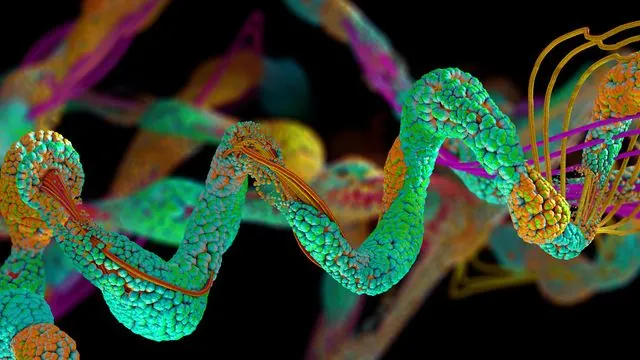
Revolutionary Discovery: How Proteins Transform to Fuel Vital Body Functions!
2024-09-24
Revolutionary Discovery: How Proteins Transform to Fuel Vital Body Functions!
In an exciting breakthrough, scientists have uncovered the remarkable ability of the protein myo-inositol-1-phosphate synthase (MIPS) to change its internal structure once activated. This transformation takes the protein from a disordered state to a precisely structured form with essential functions, specifically in the production of inositol, commonly referred to as vitamin B8. This newly unveiled process promises significant implications for understanding metabolic pathways in the human body.
Researchers from Martin Luther University Halle-Wittenberg (MLU) and the National Hellenic Research Centre have achieved a historic first by observing MIPS as it undergoes restructuring, as reported in the prestigious journal Proceedings of the National Academy of Sciences (PNAS). The implications of these findings extend beyond just MIPS, as the team suggests this phenomenon may be common among many similar proteins.
Proteins serve as the engines of life, governing crucial processes such as growth and metabolism. A cornerstone of protein research is the correlation between a protein's structure and its function; any alteration—even a minor one—can result in dysfunctions that lead to serious health issues. However, many proteins are notorious for lacking a stable structure, either entirely or in part. This characteristic poses challenges in analysis, as their behavior can shift drastically based on environmental conditions.
Professor Panagiotis Kastritis, a biochemist at MLU, notes, "Traditional protein analysis methods often fail to capture how proteins act in their natural settings. We have pioneered techniques that enable us to study proteins in near-native conditions.” This breakthrough involved analyzing samples from the fungus Thermochaetoides thermophila, a valued model organism in scientific studies.
The team discovered that MIPS not only operates in a disordered and an ordered state, but also exists in a third intermediate state. While the function of this enigmatic third state remains unclear, it may play a role in facilitating subsequent biochemical reactions by promoting water absorption, or it may serve an entirely different purpose.
Moreover, the researchers explored whether other proteins related to MIPS exhibited similar behavior. MIPS belongs to a specific class of proteins called isomerases, and upon analyzing structural data from over 340 other isomerases, they found compelling evidence indicating that these proteins may also undergo similar transformative processes.
These groundbreaking findings could signal a new era in medical research, as a deeper understanding of metabolic pathways and the proteins that regulate them may pave the way for novel therapeutic strategies. As Professor Kastritis concludes, "Our work represents an essential first step toward unraveling the intricacies of protein functions and their vast implications for health."
Could this discovery lead to innovative treatments for diseases linked to metabolic dysfunctions? The future of protein research is indeed vibrant and full of potential. Stay tuned as we continue to explore these developments!

 Brasil (PT)
Brasil (PT)
 Canada (EN)
Canada (EN)
 Chile (ES)
Chile (ES)
 España (ES)
España (ES)
 France (FR)
France (FR)
 Hong Kong (EN)
Hong Kong (EN)
 Italia (IT)
Italia (IT)
 日本 (JA)
日本 (JA)
 Magyarország (HU)
Magyarország (HU)
 Norge (NO)
Norge (NO)
 Polska (PL)
Polska (PL)
 Schweiz (DE)
Schweiz (DE)
 Singapore (EN)
Singapore (EN)
 Sverige (SV)
Sverige (SV)
 Suomi (FI)
Suomi (FI)
 Türkiye (TR)
Türkiye (TR)